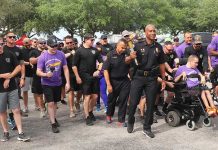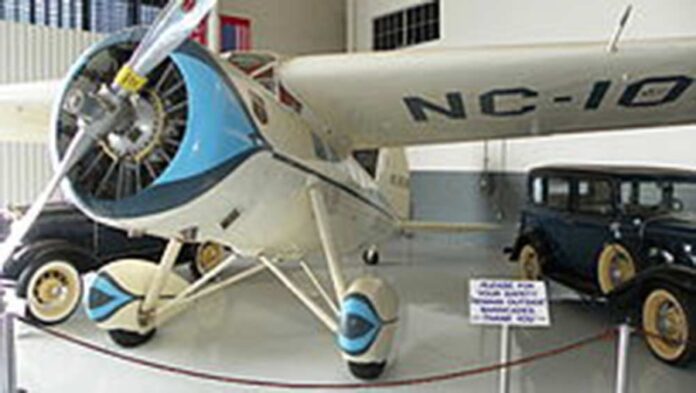
Article and Pictures By Ted Luebbers
The Experimental Aircraft Association Chapter 534 visited JKE Works, Inc. of Mount Dora, FL on Mar. 25, 2023, to see how the restoration of the Lockheed Vega 5C was coming along.
EAA Chapter 534 members have been invited to Jim Kimball Enterprises over a number of years to see the projects they have underway. JKE is a family operation started by Jim Kimball back in the 1970’s that specializes in restoring single-engine vintage aircraft.
As time went on, this company earned a reputation for restoring and building aircraft to museum standards. This business is carried on within the family by Jim’s son Kevin and grandson Kallin.
Over the past few years, chapter members have been lucky enough to follow the restoration of a 1929 Lockheed Vega belonging to Kermit Weeks, the owner of Fantasy of Flight in Polk City, FL.
Although this plane looked pretty good on the floor of the museum, it was no longer airworthy. Kermit knew of the reputation of JKE and turned the restoration project over to them.
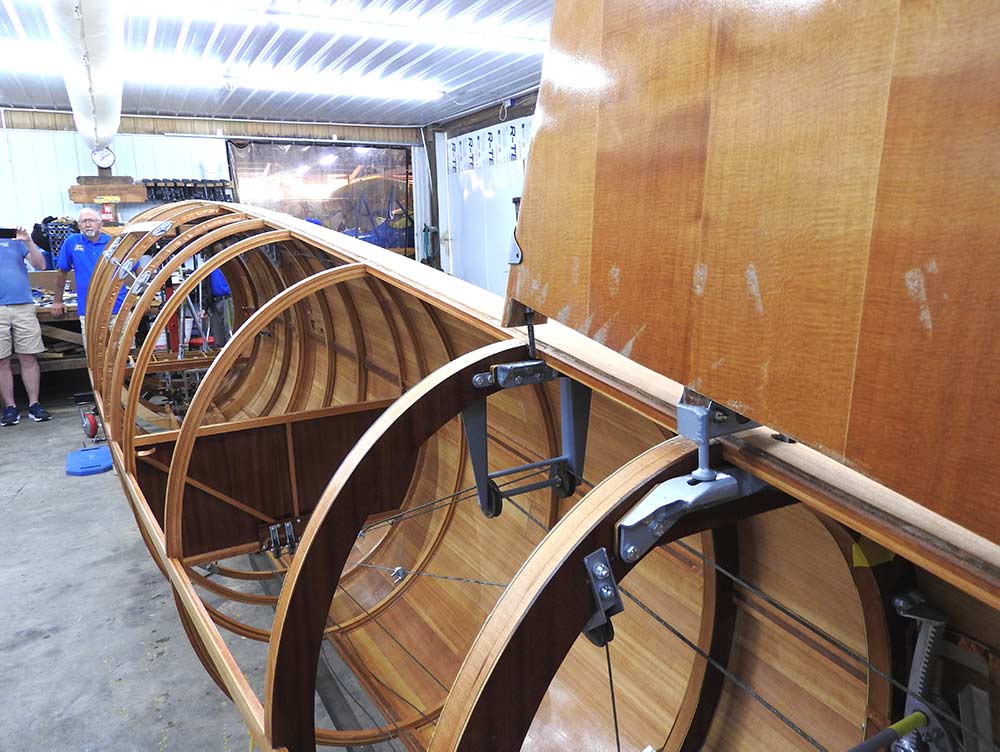
This plane is a single engine, monocoque fuselage or single wooden shell, with a large cantilevered parasol wing, all covered with plywood. This was then covered with fabric and painted.
This Vega was a popular seven-passenger aircraft, and in its day was used by notable aviators such as Amelia Earhart and Wiley Post. This particular plane was constructed by Lockheed as the first “Executive” Vega for an oil company.
Later it served for some time flying passengers and cargo in Mexico. It also was used for aerial survey work and as a test plane with General Electric refining radar. There were close to 135 Vegas built and now only six are known to exist.
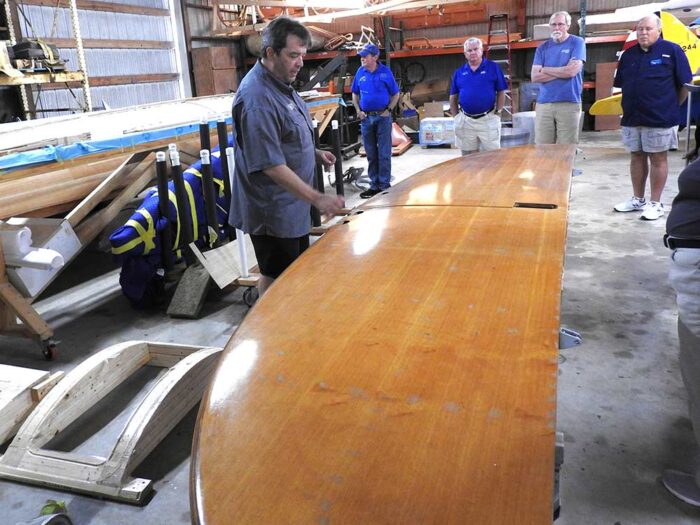
Back in the 1920s and 30’s many aircraft were constructed from wood, usually spruce, birch or mahogany. The use of aluminum in airplane construction came later.
Strange as it may seem to some people, even today there are many amateur aircraft builders still using wood, adhesives of various types, and Dacron fabric to construct small general aviation planes in their garages or hangars. Many of those folks are EAA members.
Currently, the Vega’s wing and vertical and horizontal stabilizers have been restored, varnished, and will at some point be covered with more modern fabric and painted.
When the old plywood skin on the large 41-foot wing was removed it was found that the old glue once used had pretty much failed and the old fragile plywood peeled off quite easily.
Surprisingly, the supporting structure and ribs were still sound and could be reused. New plywood and current FAA-approved adhesives would hold it in place much better.
Then comes the plywood story.
Since this aircraft’s construction was certified by the government in 1929, it has to be restored to the same specifications approved at that time. The plywood specified was vertical grain Sitka Spruce. The Kimballs checked with their aircraft plywood supplier to see if vertical grain spruce ply was available.
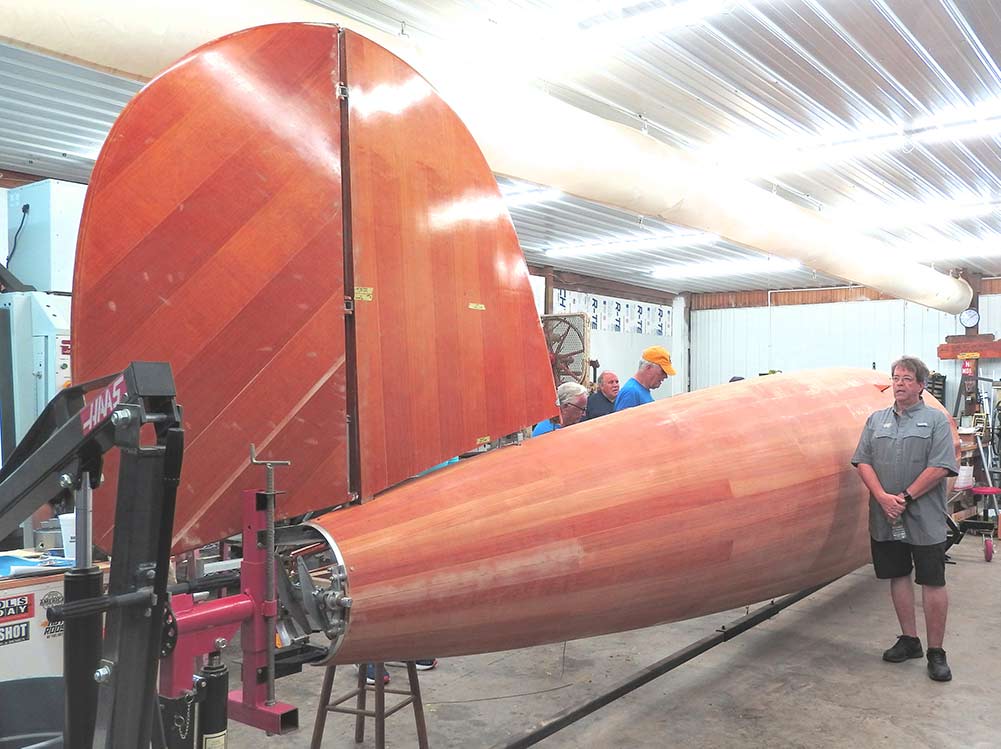
The supplier said it is not common, but he could make it if the proper veneers were supplied. He provided the name of a veneer cutter for Kevin to contact.
If they had tried to use what was available on today’s market, they would have to get a new certification from the FAA and that could take years. But there was no guarantee they would ever get the certification.
The only solution for JKE was to find vertical grain Sitka Spruce plywood on their own. That was going to take time and money.
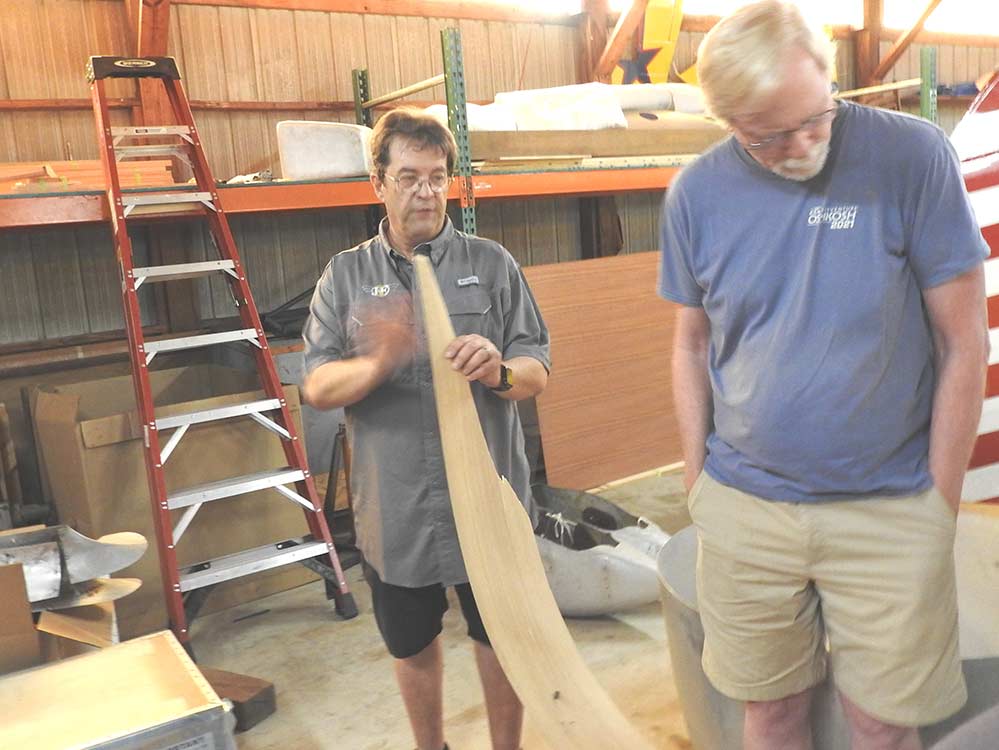
Kevin spent several months in search of large Sitka Spruce lumber required by the veneer cutter. In the end, he bought up trees still growing in Alaska. They were harvested, cut into cants, dried and barged to the lower 48, then trucked to the veneer cutter in Indiana.
Once the veneers were cut, they were shipped to the plywood manufacturer and pressed into 60-plus sheets needed for the wing and tail repairs. The search and acquisition took 16 months.
Kevin said, “There are wood parts in the Vega’s wing that came from Sitka Spruce trees that began growing before the United States was a country.”
While some of the substructures of the old aircraft was still reusable, the plywood wing and tail skins were not. Nearly all of the hardware also was removed to be used in the refurbished plane.
However, when the old plywood skin on the fuselage was removed, they discovered that many of the bulkheads, or diaphragms that supported the skin, were in bad shape.
It appeared that this airplane had been in some accidents in the distant past and some questionable repairs would never pass muster. Long story short, all of the wood in the fuselage would have to be replaced.
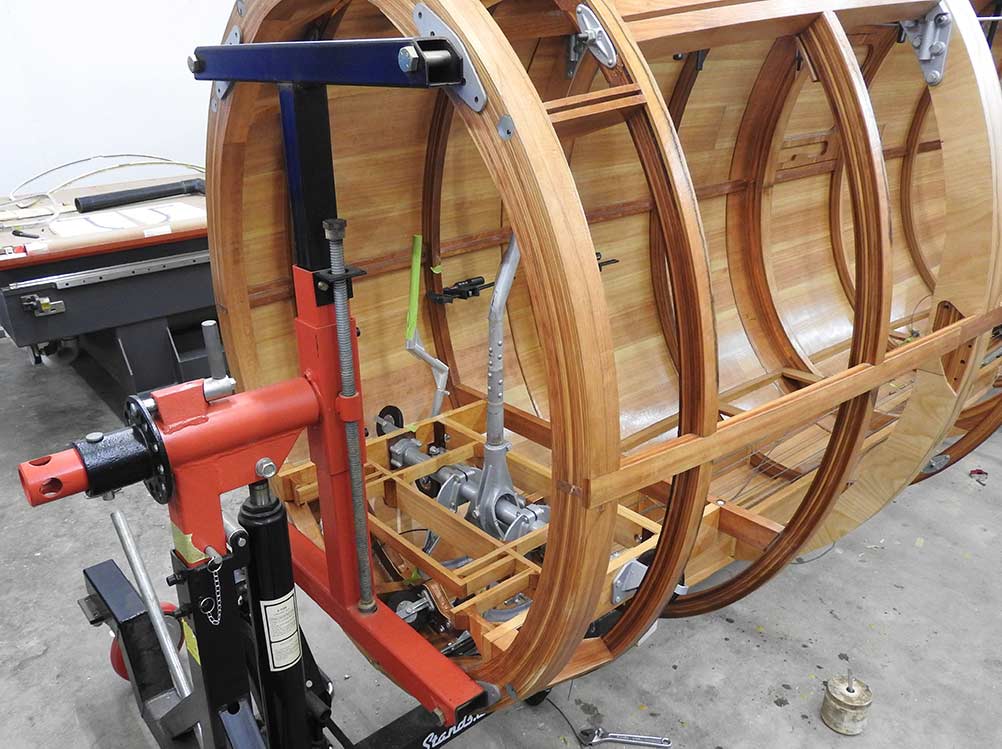
Currently, all new laminated bulkheads and other underlying wooden structures have been reproduced using factory drawings and some of the cabling and controls have been put in place. The right side of the fuselage has its molded laminated skin attached. The left side will be completed when all cables, controls and seats are in place.
The instrument panel will contain the instruments you expect to find in the original 1929 version of the Lockheed Vega. The exact engine has yet to be determined but it will be a Pratt and Whitney R1340 – 500 hp engine that was available at that time.
The plane will likely be painted in Wiley Post’s livery as Winnie Mae, just as it had been at Fantasy of Flight.
People keep asking Kevin when the plane will be finished and returned to flying status. That is always a hard question to answer when you are rebuilding a plane like this to such exacting standards. It will be done when it’s done to the satisfaction of the crew at JKE and Kermit Weeks.
The members of EAA Chapter 534 appreciate the opportunity to follow the development of this project and look forward to seeing the finished product someday. We know it will be worth the wait.
If you would like to learn more about JKE, and the Kimballs, you can go to the following website, www.jkeworks.com.
If you wish to learn more about National EAA or EAA Chapter 534 go to the following websites, www.eaa.org and www.eaachapter534.org .





